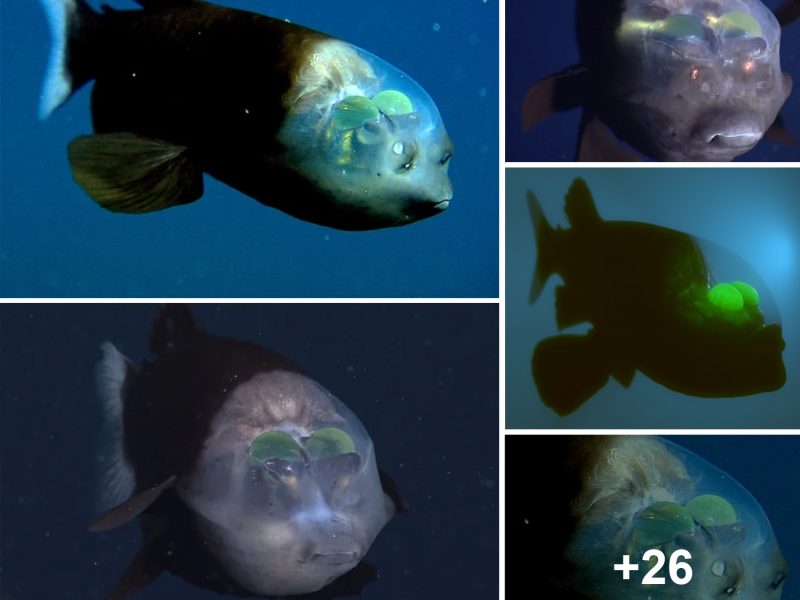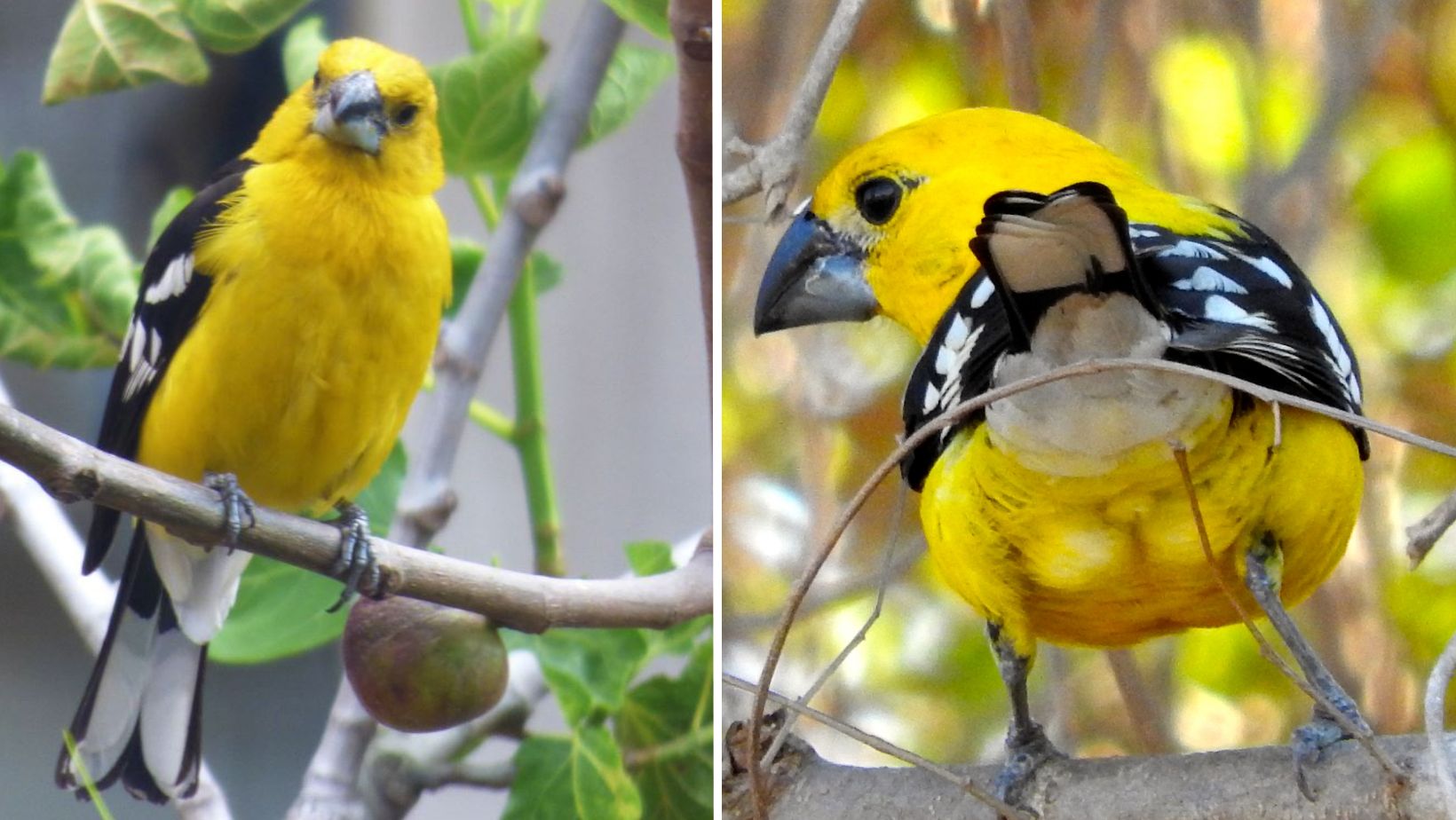
A brightly colored, brilliant canary yellow inhabitant of the foothills and highlands of Central America.
Meet the Yellow Grosbeak
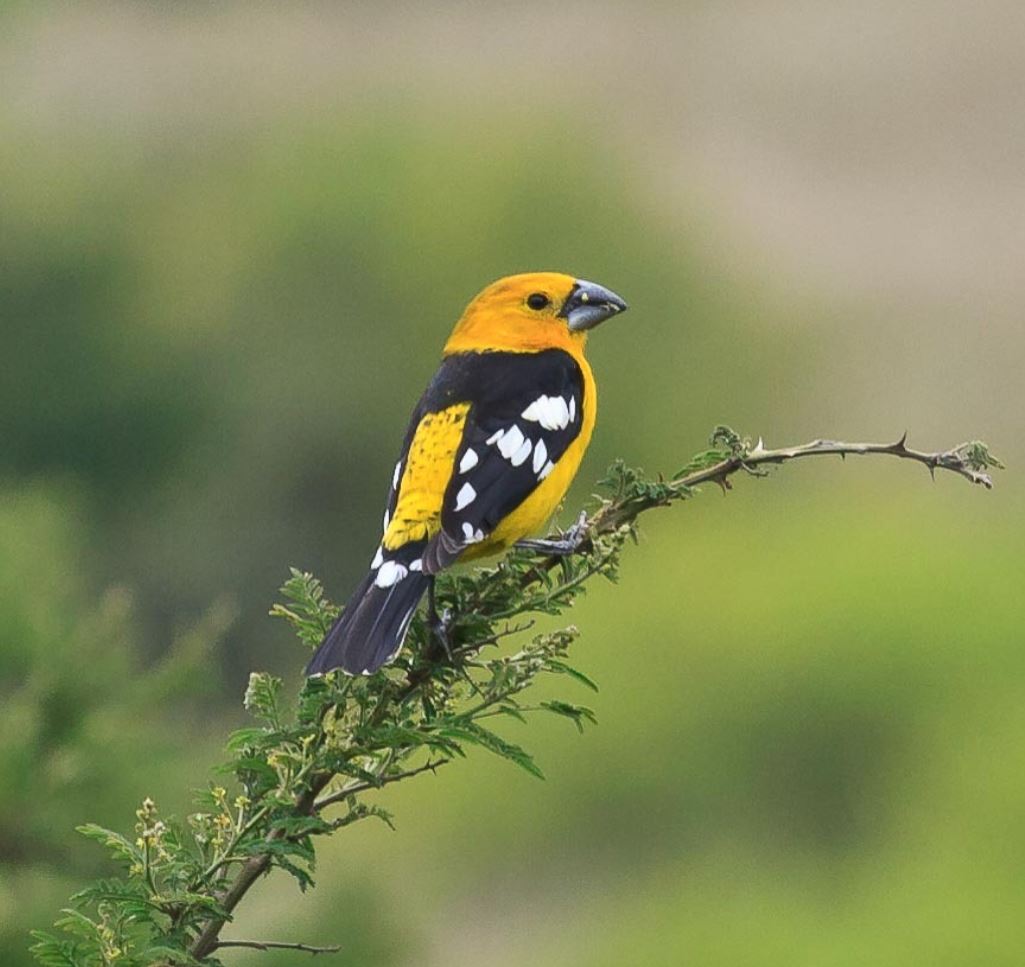 “golden grosbeak, southern yellow grosbeak” (cropped) by Dan Harville is licensed under CC BY-SA 4.0.
“golden grosbeak, southern yellow grosbeak” (cropped) by Dan Harville is licensed under CC BY-SA 4.0.
The yellow grosbeak (Pheucticus chrysopeplus) plumage displays striking contrasts of yellow, white, black, or gray. Males exhibit solid yellow head and underparts, varying from light lemon in most populations to “brilliant golden-orange” in P. c. aurantiacus found in Chiapas and Guatemala. The back is black with yellow mottlings, the rump is yellow, and the upper tail coverts are black with white tips. His wings and tail feature black coloring with conspicuous white spots, patches, and wing bars.
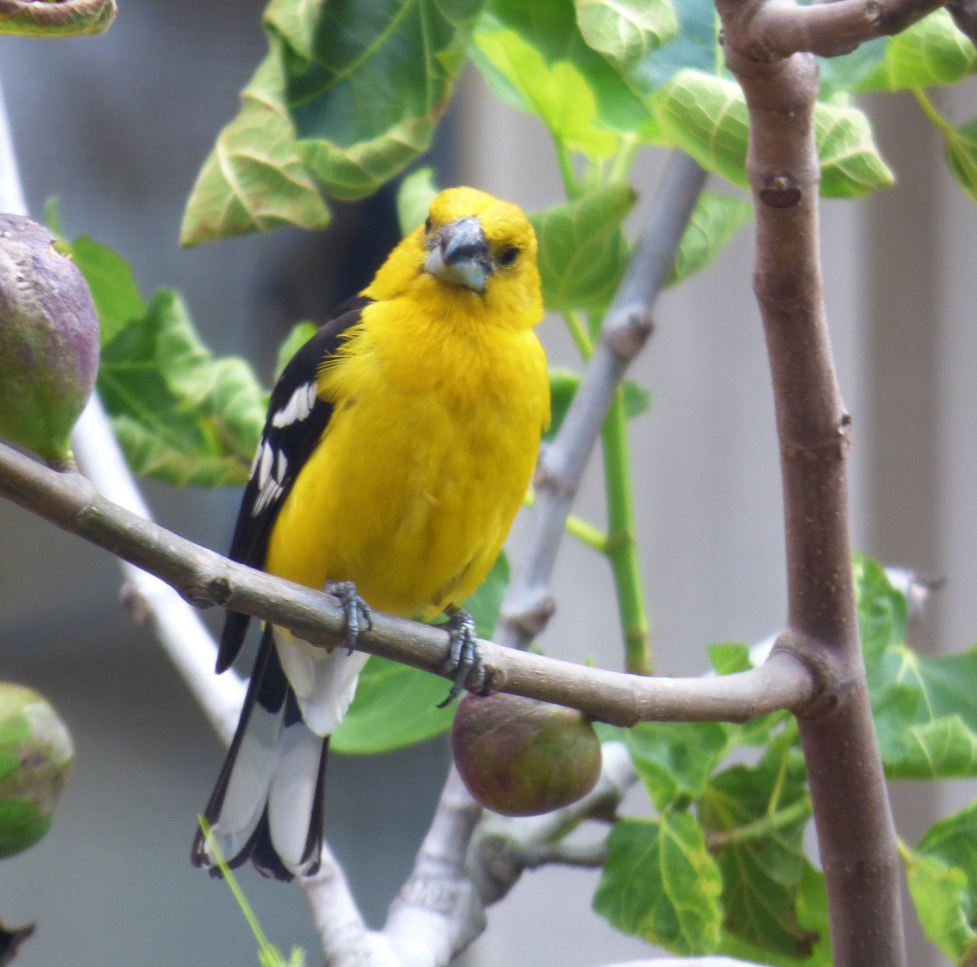 “golden grosbeak, southern yellow grosbeak” (cropped) by sandy-espinozaf is licensed under CC BY 4.0.
“golden grosbeak, southern yellow grosbeak” (cropped) by sandy-espinozaf is licensed under CC BY 4.0.
Females share similar patterns but display more olive tones on their upperparts, with dark streaks on the crown and back.
The black plumage in females is replaced by gray, and the white markings on the wings, particularly the white base of the primaries, are smaller. Immatures resemble females overall.
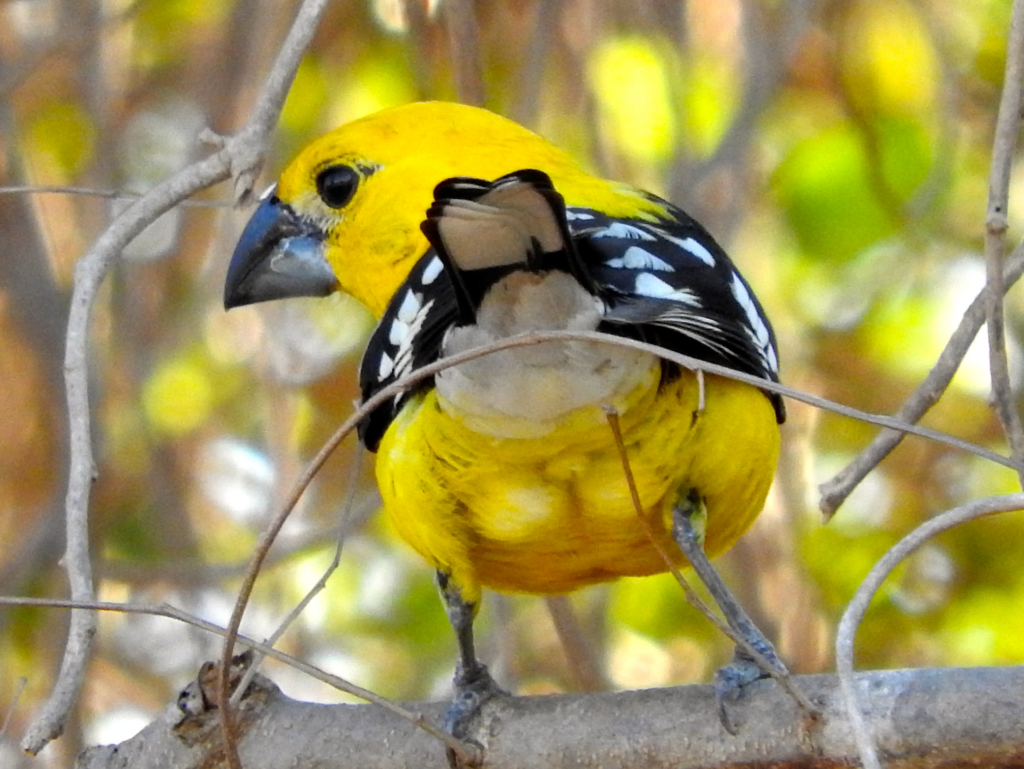 “mexican yellow grosbeak, picogordo amarillo, yellow grosbeak” by Francisco Farriols Sarabia is licensed under CC BY 4.0.
“mexican yellow grosbeak, picogordo amarillo, yellow grosbeak” by Francisco Farriols Sarabia is licensed under CC BY 4.0.
The Yellow Grosbeak shares a relationship with the Rose-breasted Grosbeak and Black-headed Grosbeak, which are commonly found in the United States. However, its primary range is in western Mexico and Guatemala, with only occasional sightings in the United States, mainly in southern Arizona. There have been only a few rare instances of this species observed outside of Arizona, likely representing escaped captive birds.
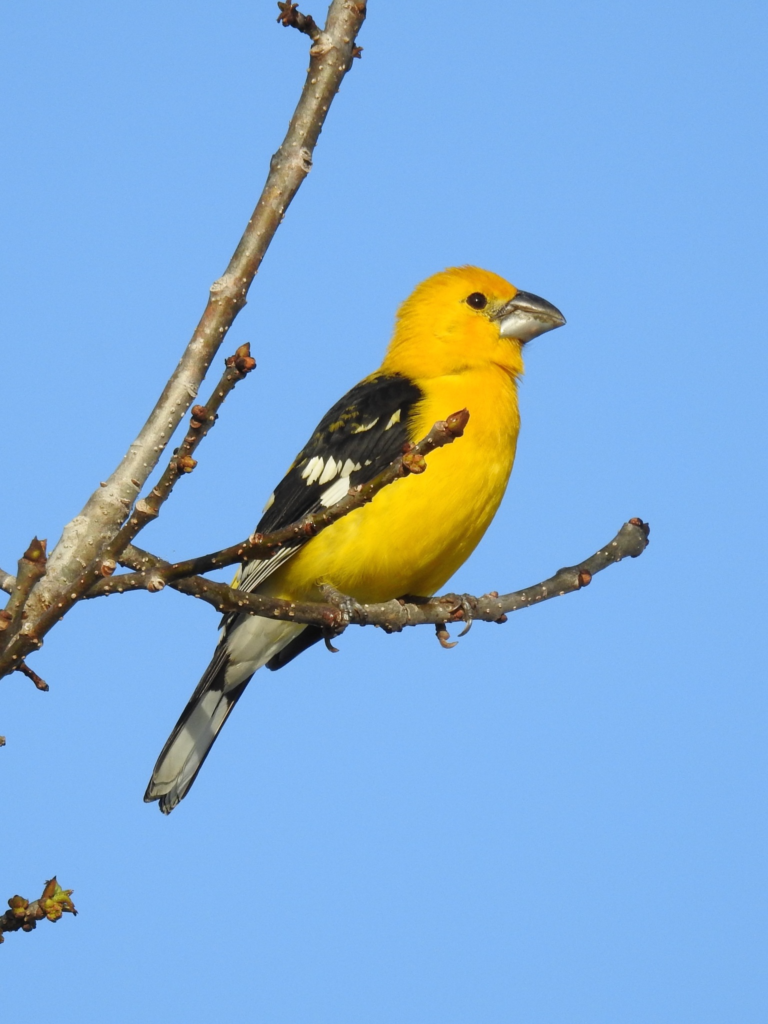 “mexican yellow grosbeak, picogordo amarillo, yellow grosbeak” by Laura Gaudette is licensed under CC BY 4.0.
“mexican yellow grosbeak, picogordo amarillo, yellow grosbeak” by Laura Gaudette is licensed under CC BY 4.0.
The Yellow Grosbeak prefers semi-open habitats with brush and thickets, often found in semi-open woodlands or scrublands.
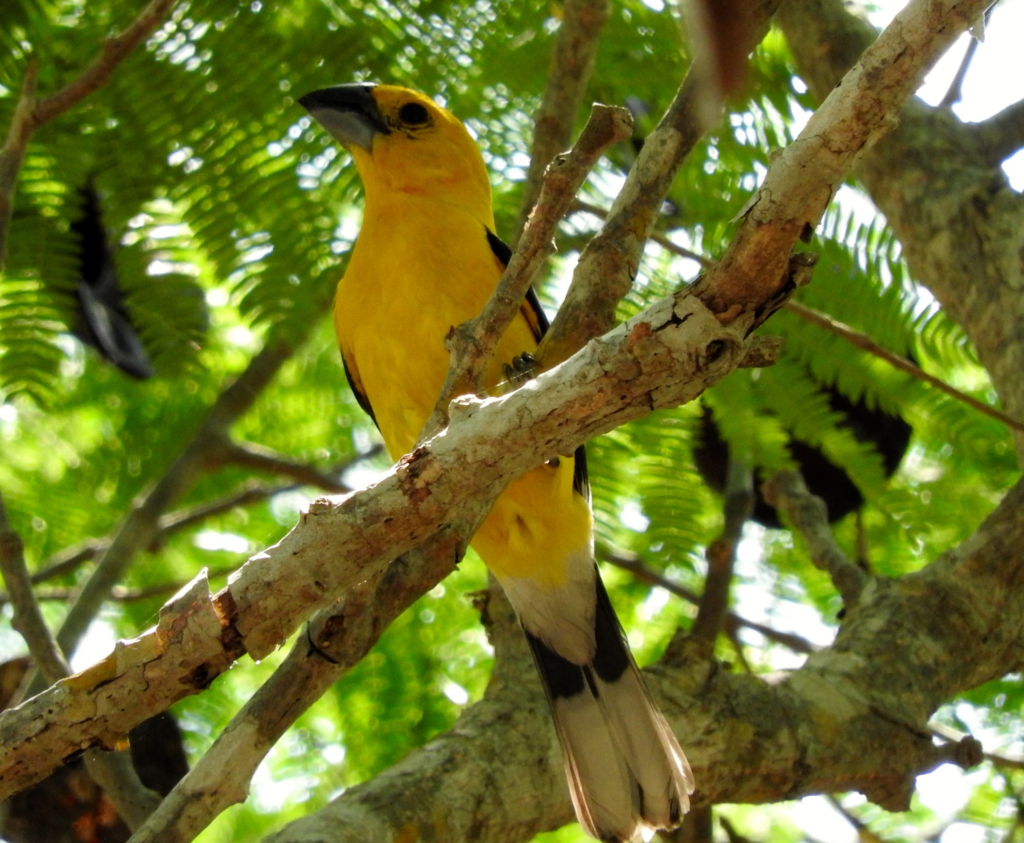 “mexican yellow grosbeak, picogordo amarillo, yellow grosbeak” by Francisco Farriols Sarabia is licensed under CC BY 4.0.
“mexican yellow grosbeak, picogordo amarillo, yellow grosbeak” by Francisco Farriols Sarabia is licensed under CC BY 4.0.
Its diet consists of seeds, fruits, and berries, as well as insects and spiders.
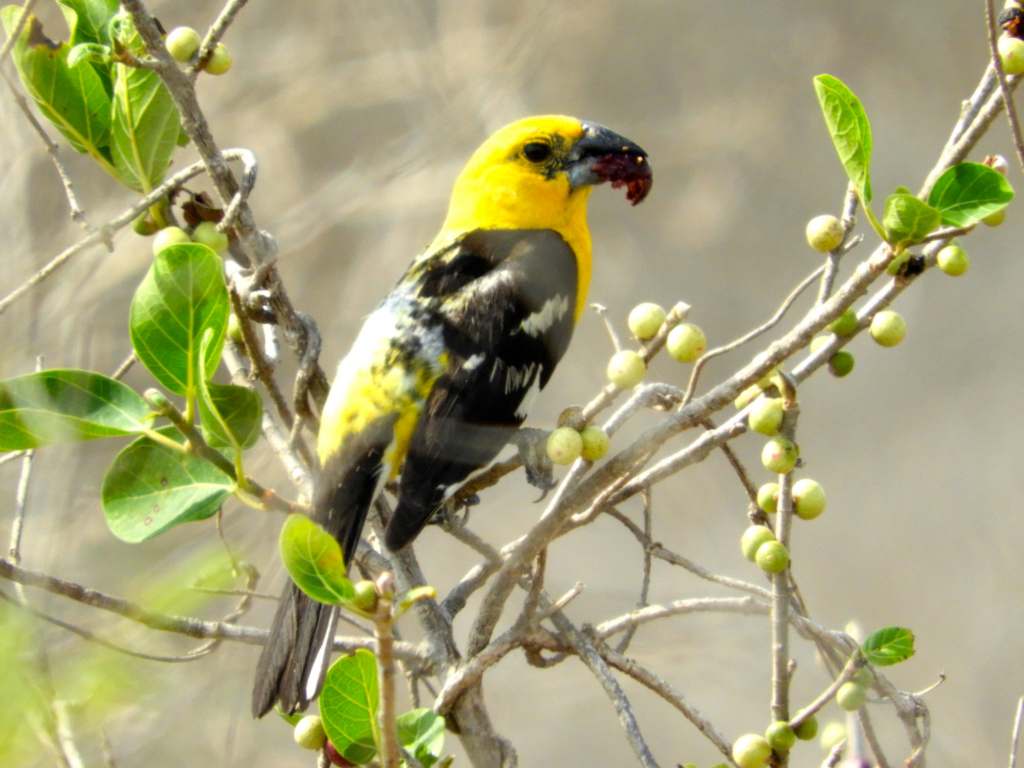 “mexican yellow grosbeak, picogordo amarillo, yellow grosbeak” by Francisco Farriols Sarabia is licensed under CC BY 4.0.
“mexican yellow grosbeak, picogordo amarillo, yellow grosbeak” by Francisco Farriols Sarabia is licensed under CC BY 4.0.
Yellow Grosbeaks construct their nests in bushes or small trees, forming small cups made of twigs, leaves, and grasses. Nesting behavior involves laying two to five pale bluish to greenish eggs with heavy brown and gray speckling. Both parents take part in incubating the eggs and caring for the young after hatching.
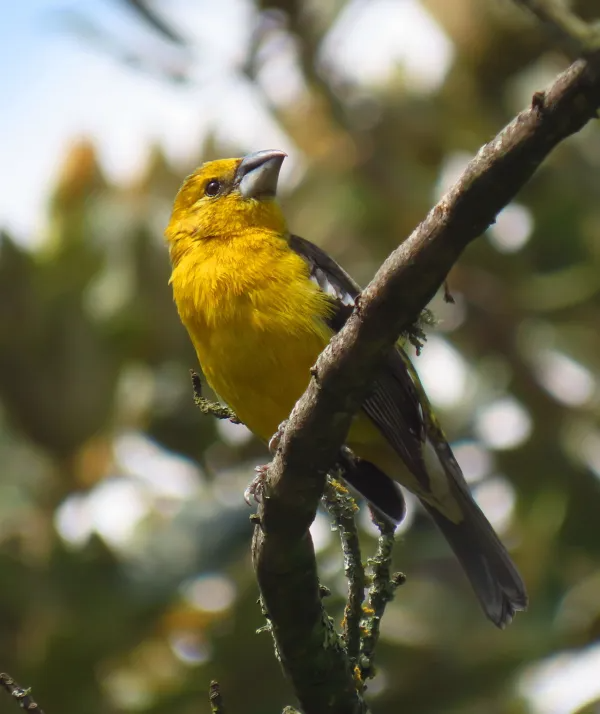 “golden grosbeak, southern yellow grosbeak” by Paul Bedell is licensed under CC BY-SA 4.0.
“golden grosbeak, southern yellow grosbeak” by Paul Bedell is licensed under CC BY-SA 4.0.
The Yellow Grosbeak emits typical calls described as a metallic “iehk” or “plihk” resembling other Pheucticus grosbeaks’ calls. Additionally, they produce a soft “whoi” or “hu-oi” often heard during flight. The song is a variable, rich-toned warble similar to that of the black-headed grosbeak but shorter.
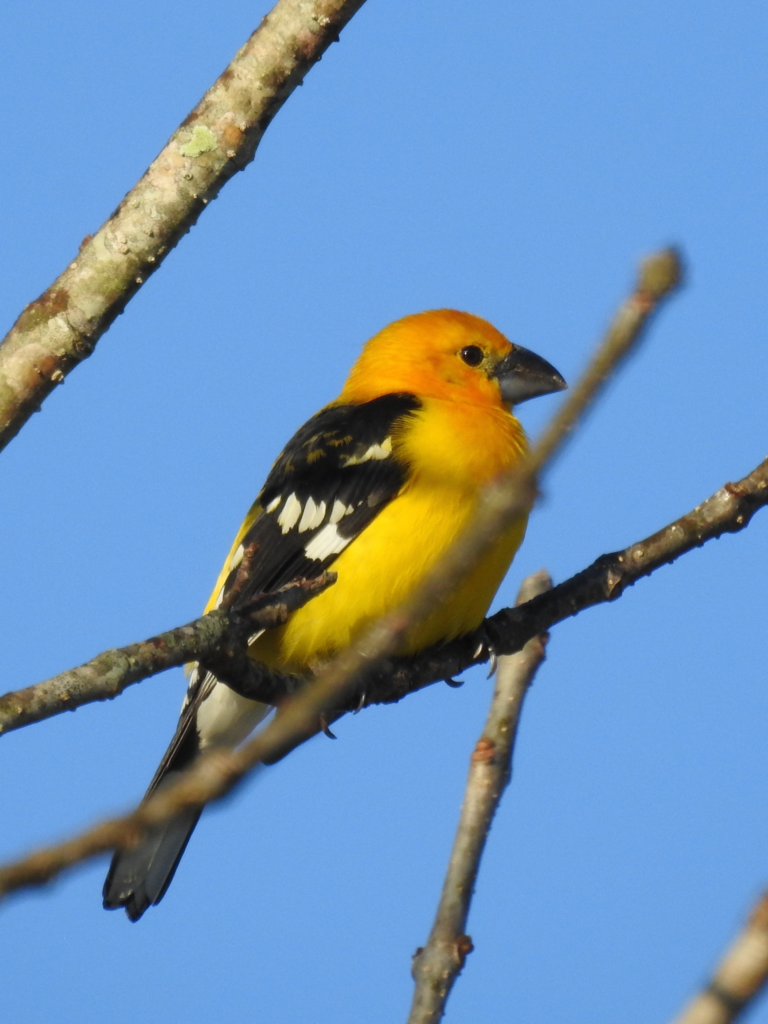 “mexican yellow grosbeak, picogordo amarillo, yellow grosbeak” by Laura Gaudette is licensed under CC BY 4.0.
“mexican yellow grosbeak, picogordo amarillo, yellow grosbeak” by Laura Gaudette is licensed under CC BY 4.0.
This bird is regarded as of Least Concern on the IUCN Red List.
Check this bird out right here:
This article uses material from Wikipedia.org which is licensed under the GNU Free Documentation License via Copyright Wikipedia. Images on this page are the sole property of the photographers (unless marked as Public Domain). Please read the license and or contact the photographers directly before using them for any purpose. Thank you all.
A Tiny Ball Of Flame Clothed In A Stunning Array Of Color!
Please SHARE this article with all your bird-loving friends and family.

